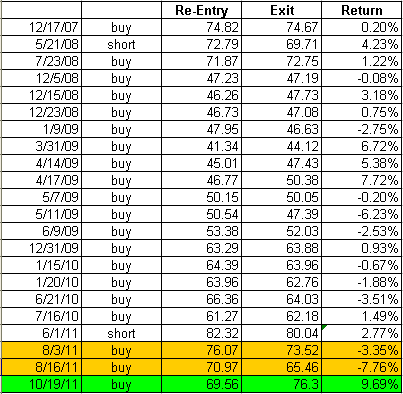On Friday, I posted the following IWM Robot comments:
It is frustrating that the IWM Robot sat out the last uptrend. As I explained earlier, this was due to conflicting ST/LT edges that developed rather early in this uptrend (pink arrow) and forced the robot to revert to cash.
From that point on, the IWM robot would have taken a new position only if a strong signal had been issued.
Below is the figure that represents the LT/ST edge evolution. We can see that the conflict continued for nine days before it was resolved with a buy signal (blue arrow), but one that was neutral.
This ST/LT figure raises the following question: When a position has been interrupted by conflicting edges, is it better to consider that the original signal is still valid when the conflict resolves in the direction of the original signal?
I will study past ST/LT conflicts and see what results we have.
Please note that at yesterday's close, we again had a LT/ST conflicting situation.
Pascal
I did some further research to see if at the blue arrow (conflict is being resolved), we could consider that the previous signal (green arrow) was still valid.
I did such an experiment whose results are shown below. The returns are slightly improved, but we can see that even if the last case produced a 9.69% return, the two previous case produced very negative returns. All in all, 12 positive and 10 negative.





 Reply With Quote
Reply With Quote

